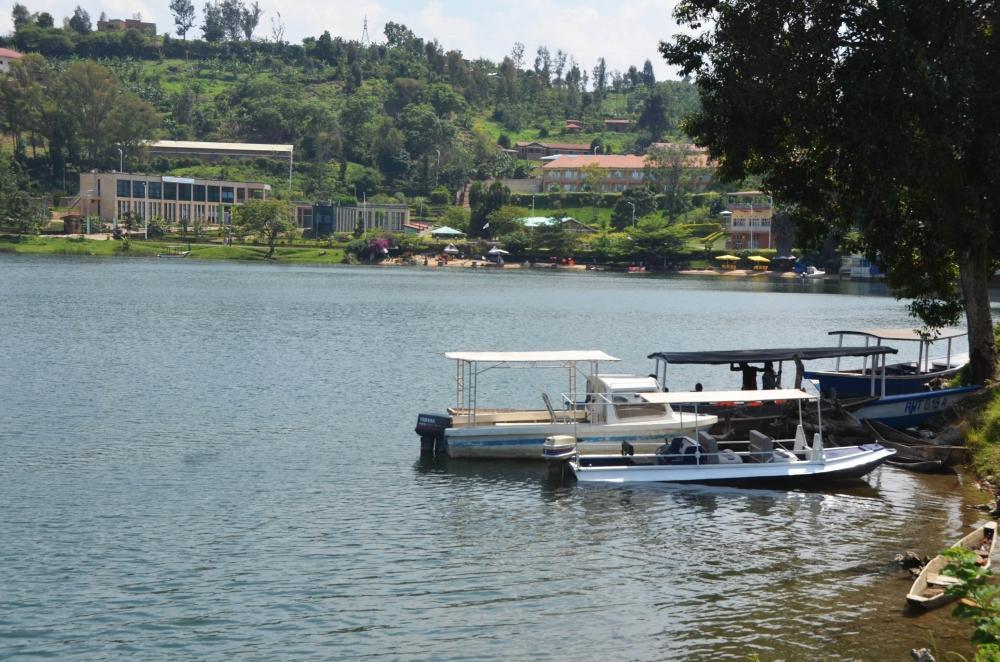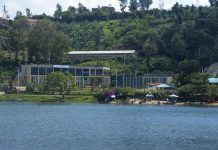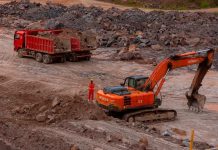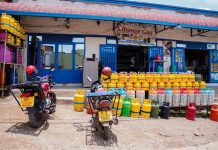Africa-Press – Rwanda. An investigation by the Rwanda Environment Management Authority (REMA) between December 2023 and January 2024 revealed that construction and agriculture projects, as well as waste discharge, are polluting four major lakes in Rwanda.
The environmental watchdog surveyed to assess compliance with the 2018 law, which requires a buffer zone of at least 50 metres between lakes and human activities to conserve the water bodies.
The lakes include Lake Kivu in Western Province, the twin lakes of Burera and Ruhondo in Northern Province, and Lake Muhazi in Eastern Province.
According to inspectors, polluting these lakes could endanger biodiversity and the economic significance they hold for the local population. Sardine (type of fish) production in Lake Kivu fluctuates between 300 to 500 tonnes per week.
Lake Kivu currently has ongoing projects to generate cooking gas and electricity (produced by utilising its methane gas) to be integrated into the national grid.
Besides fishing, the twin lakes of Burera and Ruhondo supply water for hydropower production and are linked to the Rugezi wetland, one of the most important birding areas in Rwanda.
Lake Muhazi, which is a source of livelihood for the fishing community, flows into River Nyabugogo, which then converges with River Nyabarongo, a tributary of the River Nile.
“The inspection was carried out in the lakes of Kivu, Muhazi, and Ruhondo. The revealed main polluting activities include reducing the surface of Lake Kivu which happens by dumping stones and sand in the lake, in addition to agriculture and livestock activities, house and road construction activities, gardens and pathways in the buffer zones where they are prohibited,” REMA’s report, which was shared with The New Times, indicated.
The report noted that “the inspection found many activities polluting Lake Muhazi on the side of Gasabo District and Lake Kivu on the side of Karongi District. These include discharging wastewater that is not first treated into the lakes.”
Wastewater discharges contain several harmful substances or chemicals, which may cause adverse environmental impacts such as changes in aquatic habitats, species composition, and a decrease in biodiversity.
Effluent discharges from industries and other economic activities can have a significant impact on receiving water bodies.
More than 30 per cent of the industries do not treat their wastewater due to insufficient capacity to treat their wastes, or treatment not being required according to Rwanda Cleaner Production and Climate Innovation Centre (CPCIC).
High levels of suspended sediment and waste have led to considerable economic losses due to the siltation of rivers, lakes, and reservoirs that generate almost half of Rwanda’s electricity.
Water resources board weighs in
“Findings from these inspections corroborate our water monitoring results,” Remy Norbert Duhuze, Manager of the Water Monitoring and Quality Control Division at the Rwanda Water Resources Board (RWB), told The New Times.
“Pollution of most water bodies is mainly a result of illegal human activities. Polluted water will result in a negative impact on aquatic life such as the survival of fish and other aquatic organisms, but also human activities that are water-dependent will not be sustained. For example, water treatment and supply infrastructure will need more efforts to treat water,” he said.
He said the water resources board’s first recommendation is to respect the law.
“Buffer zones on lakes and rivers should be strictly protected against encroachment. Second, any release of used water into water bodies should ensure that the water is treated and complies with applicable quality standards. Also, the population should report any suspected wrongdoing as these water bodies are public property that should be protected by every citizen,” he noted.
Conservation experts have proposed a community participatory approach as a sustainable model that could end the rising encroachment of Rwanda’s major lakes and rivers buffer zones.
Duhuze said the community-based approaches are also a good solution.
“That’s why in the sessions we have with the formal structures such as catchment committees and water users associations, as well as meetings with communities, we always ask them to help in enforcing the laws and report any cases they observe.”
Penalties awaiting polluters
“The fines are provided by the law and they are applied,” Duhuze added.
The violation is penalised under the 2018 environmental law.
The law prohibits dumping waste and chemicals in protected areas such as lakes. It also prohibits agricultural and livestock facilities within 50 meters of the lake banks, as well as cattle kraals, slaughterhouses, and cattle markets within 200 meters of the lake banks. Additionally, building in water sources, streams, rivers, and lakes, as well as within 50 meters of the lake buffer zone, is also prohibited.
The suspect is liable to an administrative fine of Rwf500,000 and the demolition of their installations.
If the owner of the project that underwent an environmental impact assessment commits acts that result in damage to the ecosystem, they are responsible for rehabilitating the damaged ecosystem and paying an administrative fine equal to two percent of the project’s cost.
According to the law, water efficiently purified to standards may be poured into streams or lakes.
Any person who pollutes water bodies such as lakes by dumping, spilling, or depositing chemicals of any nature above tolerable limits for human health or aquatic life, commits an offence.
Upon conviction, they are liable to imprisonment for a term of not less than two months and not more than two years, and a fine of not less than Rwf2 million, and not more than Rwf5 million.
For More News And Analysis About Rwanda Follow Africa-Press






